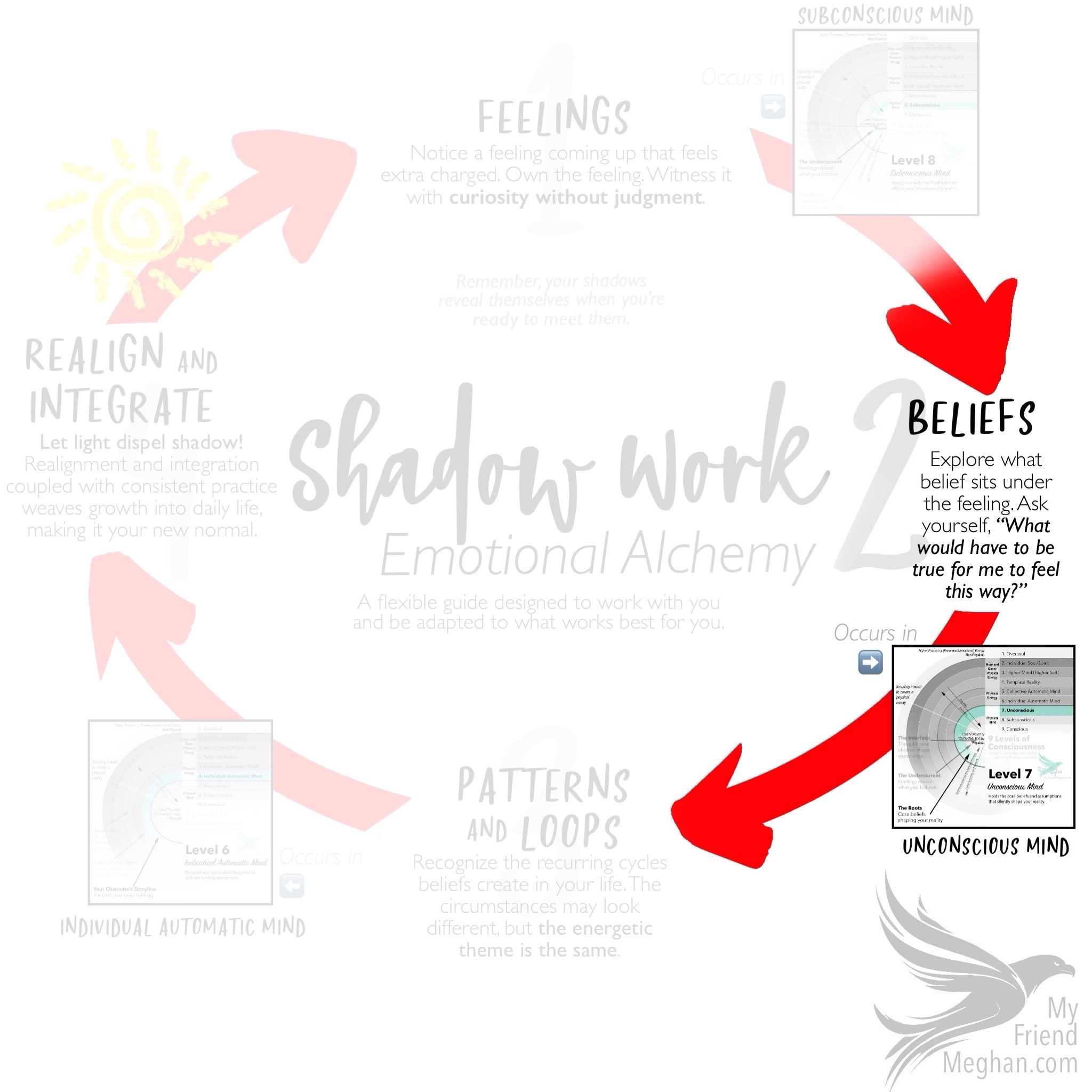Your beliefs are blueprints for your experience. Many of the thoughts and reactions you have day-to-day are influenced by beliefs that were formed long before you realized you had a choice. These unconscious beliefs often operate quietly in the background, shaping how you see yourself and how you respond to the world. Shadow work invites us to bring these beliefs into the light so they can be examined, understood, and transformed.
How Beliefs Form
Beliefs often take root in childhood or during significant life experiences. They can be shaped by family rules, cultural expectations, or early attempts to protect ourselves from pain. Some beliefs may have served us once, helping us cope with difficult circumstances. Others may never have been aligned with our true selves but became ingrained simply because they went unquestioned.
Beliefs rarely appear out of nowhere. They’re shaped by the environments and experiences that surround us long before we realize we have a choice. As we discussed in the introduction to this series, some of the most common influences are:
- Formed in response to pain, rejection, and unmet needs
- Adopted from the viewpoints of our parents
- Absorbed from unspoken family expectations
- Internalized from societal and cultural conditioning
- Shaped by religious teachings
- Influenced by school environments
- Molded by the dynamics of close friendships and relationships
For example, if a child is ignored or dismissed in moments of vulnerability, they may form a belief like “my feelings don’t matter” or “I’m unlovable.” Left unexamined, that belief can continue to influence how they interpret relationships decades later. What once felt like protection becomes baggage that keeps them from showing up authentically in the present.
Finding Beliefs Beneath Emotions
In Step 1 of shadow work, we focused on working with feelings. Emotions arise at the subconscious level, and when we pause to name them, we create an entry point for deeper work. Step 2 is about tracing those emotions back to the beliefs beneath them, which occur at the unconscious level. The simple question to ask is:
What would I have to believe is true in order to feel this way?
For instance, if someone texts a friend and doesn’t get a response right away, they might notice feelings of anxiety surfacing. By asking what belief is fueling that anxiety, they may uncover something like, “my friend doesn’t value me as much as I do them” or “people don’t really like talking to me.” Often, these beliefs connect back to much earlier experiences—such as being excluded on a playground—where the mind created a narrative to make sense of the pain.
Why Beliefs Matter
Unconscious beliefs don’t just sit quietly in the background—they shape behavior. This is where the Pygmalion effect, also known as the self-fulfilling prophecy, comes into play. If someone carries the belief “I’m unlovable,” they may act in ways that push others away, unintentionally reinforcing the very belief they fear. The loop continues until the belief is brought into awareness and shifted (and we will begin addressing patterns and loops in the next step).
This is also where polarity comes into play—choosing whether to interpret an experience through a fear-based lens or a love-based one determines whether the belief keeps you stuck or opens the door to transformation.
This is why uncovering beliefs is so vital. Without awareness, we remain stuck in patterns that don’t reflect current reality. By identifying the belief at the root of an emotional reaction, we gain the power to dismantle what no longer serves and to realign with truths that support growth, presence, and wholeness.
The Power of Working With Beliefs
At the core, beliefs form the architecture of your inner world. By bringing unconscious beliefs into awareness, you open the possibility of transformation. This isn’t about rejecting parts of yourself, but about choosing consciously what you want to carry forward. Each belief examined and realigned is another step toward living from clarity, empowerment, and truth.
Actionable Insights
- Trace emotions back to their source. When you notice a strong emotion, ask yourself: What would I have to believe in order to feel this way?
- Examine the age of a belief. Does this belief reflect your present reality, or does it belong to an earlier version of you?
- Challenge the story. If a belief surfaces, ask: Is this something I consciously want to carry forward, or is it ready to be released?


Leave a Reply